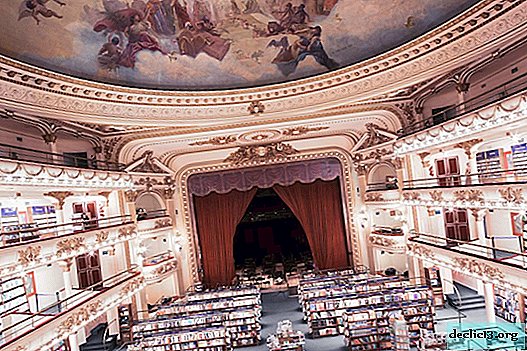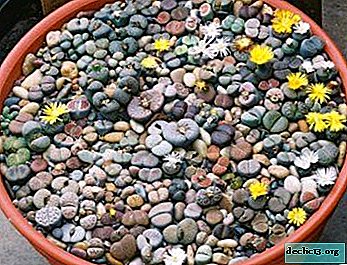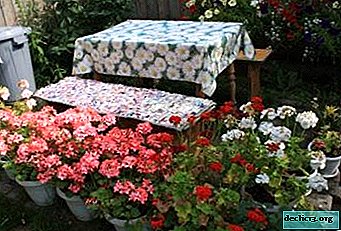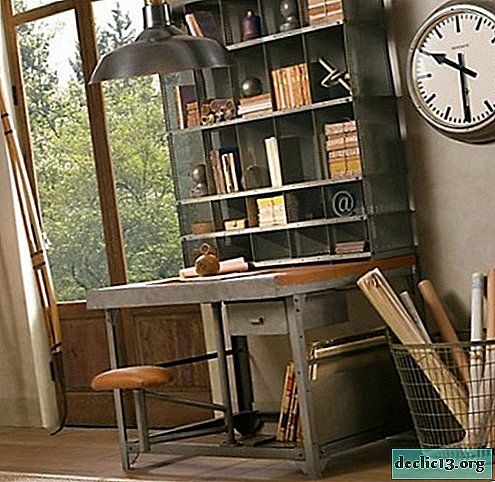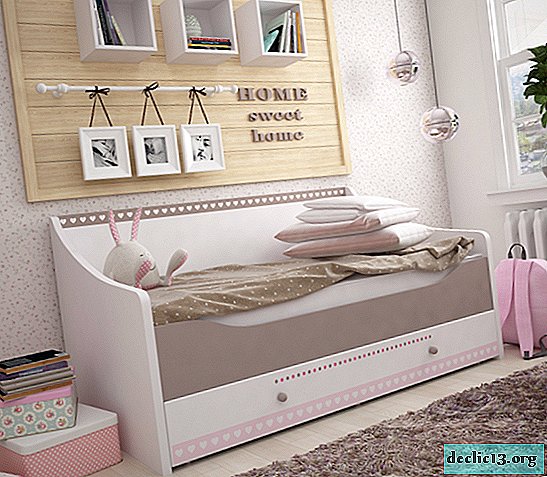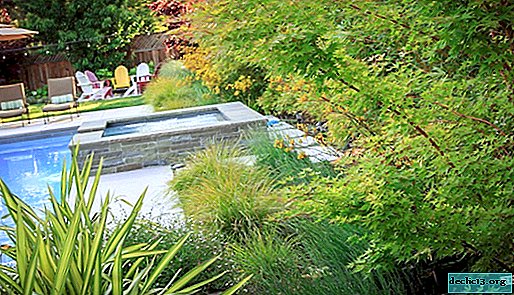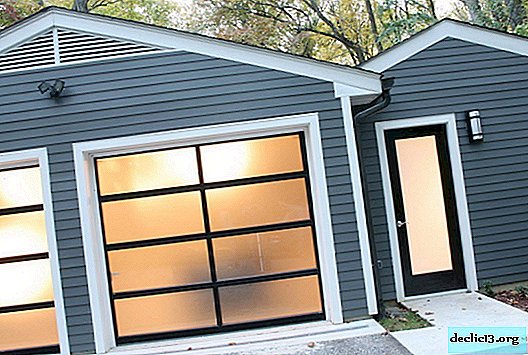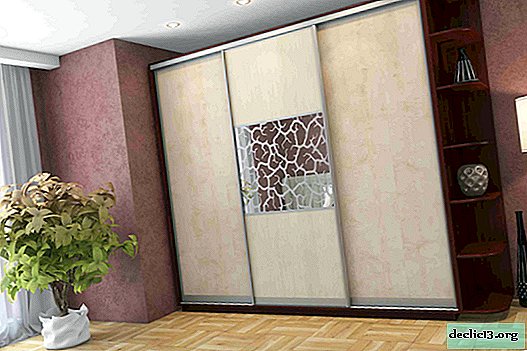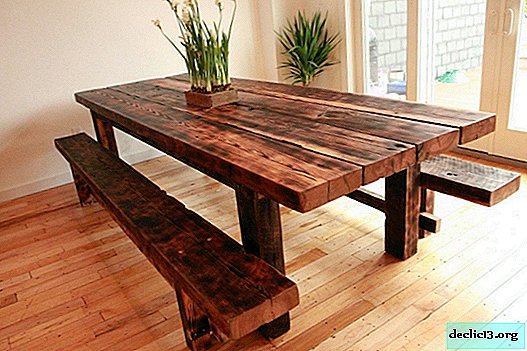Laminate in interior design 2018
Laminate as a material for creating flooring for a wide variety of rooms has long gained popularity in our country. Affordable in cost, with high aesthetic qualities, convenient in installation and operation - this material is able to decorate any interior. Just choose a laminate for flooring, you need to carefully, because there are many varieties, strength classes, options for imitation of various surfaces. But first things first. Let's find out together what type of laminate is suitable for rooms with different functional loads, how to choose density, strength level, color and texture.
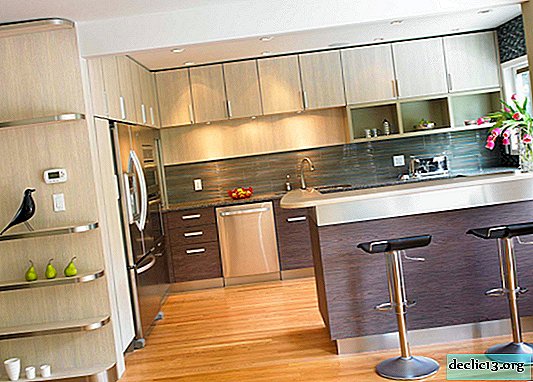

Classification of laminate flooring
So, laminate - this is the material for the floor covering, which consists of several layers: a fiberboard or chipboard plate, several paper layers and a final laminate coating of acrylic or melamine resin. It is the laminated surface that protects all other layers from moisture, dirt, dust and mechanical damage. Obviously, the technological properties of the product largely depend on the quality of the top layer.




Laminate for good reason has received such a high popularity among our compatriots. After all, it has a number of significant advantages:
- high aesthetic qualities;
- a wide range of colors, the ability to simulate any surface - from parquet boards to ceramic or stone tiles;
- the possibility of self-assembly for short periods and without lengthy surface preparation;
- affordable cost (laminate is much cheaper than parquet, but more expensive than linoleum);
- sufficiently high strength and durability (compared with linoleum);
- relative ease of care (more complicated than with linoleum, but simpler than with parquet - no periodic cycling is necessary);
- The material is environmentally friendly.




Laminate Classes
In order to determine the choice of a laminate for a particular type of room, it is necessary to take into account the class number - two refers to residential premises, three refers to commercial ones (must be present on the material labeling):
Laminate 21 classes it is intended for premises with low passability and low loads from the side of furniture. Such material is rare due to low popularity. It does not last long - less than 3 years;




Laminate 22 classes suitable for use in bedrooms, living rooms and children's rooms with light furniture and low traffic. Service life usually does not exceed 4 years;




Laminate 23 classes It is able to withstand heavy loads (heavy furniture) and is used in rooms with high traffic - not only in living rooms, nurseries and corridors, but also in hallways, kitchens, dining rooms. Juice exploitation also rarely exceeds 4 years;




Laminate class 31 Designed for commercial premises with low load. Its technical characteristics are higher than that of a laminate for residential premises. If you lay such material in the conference room, then it will last about 3 years, in a residential building, its service life can be 10-12 years;



Laminate class 32 It has higher strength characteristics and can serve as a floor covering in commercial premises with an average load. It can be used in classrooms, offices, reception rooms. In this case, the laminate will last about 5 years, in a residential building its operation juice can be about 15 years.




Laminate 33 classes It has the highest technological properties and is used in commercial spaces with a high floor load. It can be used in restaurants, gyms, shops with high traffic. Juice service in this case varies from 5 to 6 years. In a living room, such coverage can not be changed for 20-25 years.



Experts recommend not saving on the purchase of material for flooring. Indeed, the replacement of the laminate is associated with global preparations in terms of repair - it is necessary to completely free the room, and in a one-room apartment, for example, such events are difficult to carry out. In order for the laminate to serve as a reliable and durable floor covering as long as possible, it is recommended to purchase material labeled for commercial premises - from class 31 and above. The cost of a high-quality laminate will pay off with durability, excellent aesthetic and strength characteristics.



Other laminate selection criteria
Material thickness
Material of various manufacturers and classes varies in thickness from 6 to 12 mm. Obviously, the thicker the flooring material, the stronger and more durable the finish can be. Therefore, experts recommend choosing a laminate with a thickness of at least 8 mm and, based on their financial capabilities, try to acquire it as a material with as thick a layer as possible. The thicker the laminate, the easier it is to install. In addition, it is necessary to take into account the sound-absorbing characteristics of the material - the thicker the laminate, the higher these properties.


Laminate Manufacturer
The choice of manufacturers in the modern market of finishing materials is incredibly wide. But there are always some of the most popular options for companies that have established themselves with a long impeccable reputation. Typically, such firms provide a long-term warranty on their products. There are even manufacturers who give a lifetime warranty on their products.


As a rule, the warranty period from the manufacturer varies from 5 to 15 years. In Russia, there is no GOST for the production of laminate, so all companies use the Technical Conditions. Most foreign manufacturers rely on GOSTs, most often international.



The division of the laminate according to the type of connection of the elements
The entire laminate can be divided into two groups according to the type of connection of its elements (panels):
- glue;
- castle.


Adhesive laminate It costs less than a castle, but it can’t be mounted independently, without certain skills. The panels are joined end to end using a special quick-drying glue. Such a connection provides a surface without gaps. The flooring is more resistant to moisture than created with a castle laminate. A significant drawback of such a coating is the inability to replace a damaged panel - all elements are glued.


Title "castle laminate"speaks for itself - the panels are fixed without the use of glue using special" locks. "The advantage of this coating is the quick installation and the ability to replace individual panels if they are damaged. The disadvantages include the receipt of gaps between the coating elements, which will be exposed to moisture.



There are two types of locks for laminate panels:
collapsible (click) - double locks, which are located at an angle of 45 degrees. Such fastening is very convenient from the point of view of installation and subsequent operation. The curvature of the base for such locks is allowed no more than 3 mm per linear meter;



snap locks (lock) is even simpler than collapsible locks. The owner who has not had to deal with the laminate will be able to cope with panels that have this type of connection. But it must be borne in mind that for panels with this type of locks you need a perfectly flat floor base.



Classification by type of substrate for the laminate
When using a laminate to create a floor covering, it is necessary to use a substrate - a material that insulates the top layer from the floor. The substrate will provide the necessary level of heat and sound insulation. Laminate of class 32 and higher may contain a substrate as part of the elements and not require preliminary preparation of the floor surface, except for thorough cleaning with a vacuum cleaner.



By type of material, all substrate options can be divided into three groups:
Polyethylene foam backing - the most common option. Moisture resistance, affordable cost and ease of installation brought this type of material to the top list of the most popular options. But there are also disadvantages to the polyethylene foam material - over time it can sag significantly (poorly holds shape), is not a completely environmentally friendly raw material;



Cork backing - It is absolutely environmentally friendly, it is an excellent heat insulator (it is most often used for flooring the first floor). The cork holds its shape perfectly, it can be called durable material. But the possibility of condensation decreases its popularity. In order to rid the material of this drawback, the cork is coated with bitumen or rubber. Such material has excellent cushioning and practically does not get stuck;



Special backing, which is part of the laminate panels, allows for very quick installation. It provides excellent heat and sound insulation, lasts quite a long time and without the formation of condensate. But high cost often becomes a key criterion for choosing a laminate for flooring.



Also, experts recommend paying attention to the icons on the panel packaging, which can mean the following properties:
- possesses an antistatic coating (will not attract dust and fine litter);
- not exposed to fading in the sun;
- does not require special care;
- To clean the surface, you can use household cleaning products;
- strong and steady against mechanical influences;
- suitable for covering the so-called "warm floor";
- the surface is resistant to the formation of fungus and mold;
- The material is non-combustible.



Choosing a color scheme for flooring
The choice of color scheme for floor design largely forms the image of the entire room. Not only the interior design, but also the psychological perception of its image as a whole depends on whether the color of the flooring blends with the overall color scheme of the room or stands out with a bright or dark accent. The range of modern stores of finishing materials for floors is incredibly wide - the owner with any aesthetic preferences and wallet size can find his own color scheme.




In small rooms, designers recommend using light-colored materials for surface finishes to visually expand the space. But this rule applies to flooring to a lesser extent. The fact is that for the comfortable psychological state of people in the room, the color of its flooring should be at least two shades darker than the decoration of the walls. This will allow you to "feel the ground under your feet."



Almost every owner of an apartment or house knows that the execution of the ceiling in white, the walls are 1-2 tones darker, and the floors the darkest tone, allows you to create a visual increase in the height of the room. Such a design technique is often used in the design of premises in standard and small-sized apartments in our country.



Laminate with the image of a floor board with seemingly worn surfaces from time to time is incredibly popular, with regard to interiors in the style of country and shabby chic. Scuffs and imitation of chips help not only create an authentic stylistic direction, but also bring originality to the most ordinary design of the room.




If a cool color palette is used to decorate and execute basic furniture in the room, then a warm natural wood pattern will always help raise the degree of color temperature of the interior. Given the scale of the surface of the floors, even the only design element - flooring, may be enough to create a balance in the color perception of the image of the room.



The popularity of using gray and its shades to decorate modern homes has reached the colors of the laminate. Noble gray shades can be presented both in a light, silver palette, and in dark, anthracite shades. The advantage of using light gray shades to design the flooring is also that the dust on such a laminate is practically invisible.




And finally
Recently, a rule that says that the size of a floorboard or tile (depending on what imitates the laminate) should be the larger, the more spacious the room itself, ceases to have its weight. Flooring with the image of large boards or dies, tiles or any other elements that make up the flooring is gaining more and more popularity. This color is used regardless of the size and purpose of the room. And most often it allows you to visually increase the amount of space.




Laminate can not only be used to create flooring. For several consecutive seasons, the use of this material for designing an accent wall or part of it has not lost its relevance. At the same time, the coloring of the laminate for finishing the wall or part of the room does not have to coincide with the material for the floors - it all depends on the chosen color scheme of the interior, the way of accents and stylistic performance. Using a laminate, you can decorate the facades of storage systems, the space around an electric fireplace, trim niches and ledges, create panels and aprons in wall decoration.







